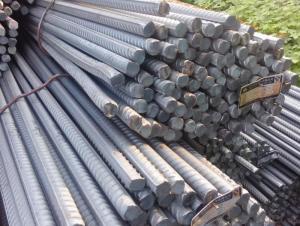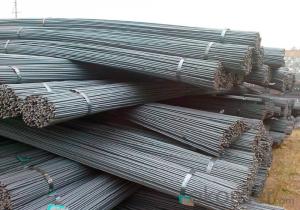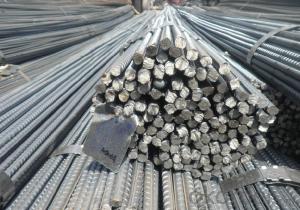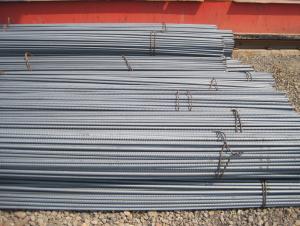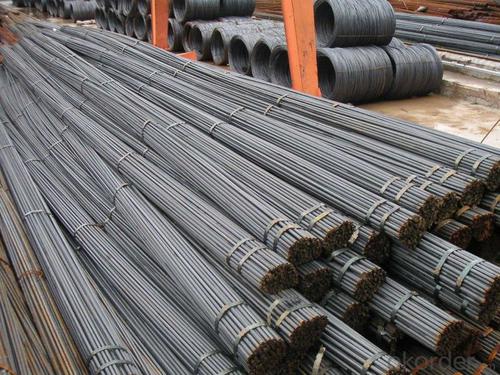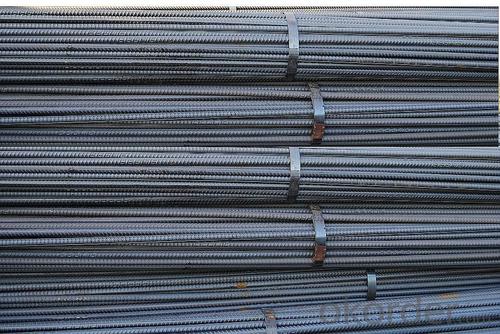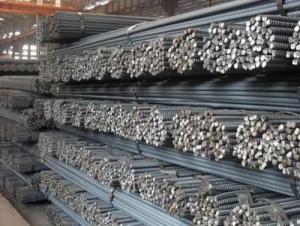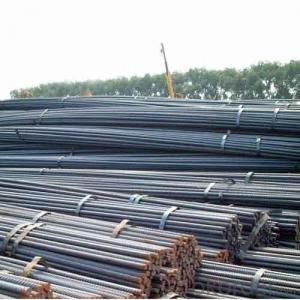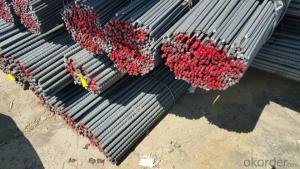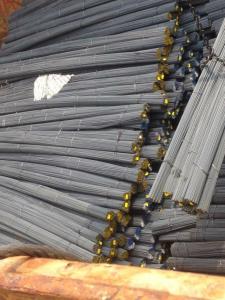HRB400 Reinforced Deformed Steel Bar
- Loading Port:
- China main port
- Payment Terms:
- TT OR LC
- Min Order Qty:
- 100 m.t.
- Supply Capability:
- 100000 m.t./month
OKorder Service Pledge
OKorder Financial Service
You Might Also Like
Specification
HRB400 Reinforced Deformed Steel Bar
Product Description:
| Item Name | Deformed Steel Bar(Rebar) | |||||||
| Standard | BS4449:1997,GB1499.2-2007 | |||||||
| Certification | ISO9001,UK CARES | |||||||
| Dimension | Diameter:6.5mm-40mm,as customer's requirement | |||||||
| Length:9000mm-12000mm,as customer's requirement | ||||||||
| Application | It is widely used in Oil pipe,Gas pipe,Construction,etc | |||||||
FAQ:
1.Q:You are Factory or Trading Company?
A:We are factory,our main products include Steel plate,Steel Bar,Steel coils.
2.Q:What’s the MOQ?
A:Generally,the trail order will be accepted.The MOQ can be confirmed according to the different products.For example,the MOQ of rebar will be 25-50MT,the galvanized steel pipe will be 10MT,the stainless steel pipe will 1-5MT.
3.Q:Do you have OEM service?
A: Yes.Variety of products size,quality and quantity can be customized according to your need.
4.Q:Could you support free sample?
A:Yes.We can supply FREE samples.But the delivery charges will be covered by our customers.
5.Q:How about the delivery time?
A:Within 15-30days after receiving the deposit or L/C at sight.
6.Q:How about the trade terms?
A:EXW,FOB,CFR,CIF will be accepted.
7.Q:How about your payment terms?
A:30%TT in advance and the balance against of copy of B/L.
The irrevocable L/C at sight will be accepted.
8. Why Choose Us?
A:Best Quality-Steel plates from China First-Class mills include heat and batch no. for tracking.
B:The most Competitive Price-As the A-Level agent of the world top 500 steel mill, they provide us the lowest price.
C:Fast Delivery-Stationed staffs in mill for monitoring and speeding up the production at any time.
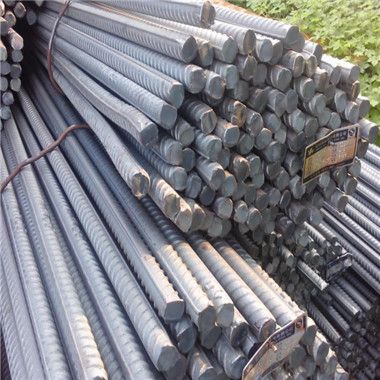

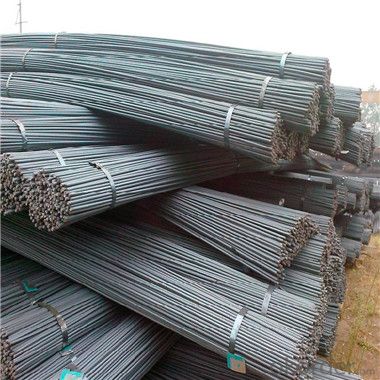
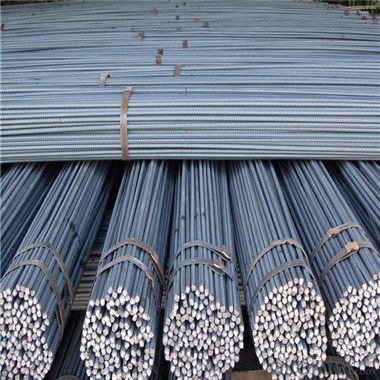
- Q: How are steel rebars protected against lightning strikes?
- The process of "bonding" shields steel rebars from lightning strikes. When constructing a building, steel rebars are linked to a lightning protection system to safely redirect the electrical energy of a lightning strike into the ground. This system typically comprises lightning rods or air terminals positioned at the highest points of the building to attract the lightning strike. Subsequently, the rebars are interconnected with conductor cables, creating a network that effectively grounds the lightning current. The conductor cables are fastened to the lightning rods and extend down the building, connecting with the rebars at various points. By bonding the rebars with the lightning protection system, the electrical charge from a lightning strike is efficiently conducted away from the building and harmlessly discharged into the ground. Moreover, additional precautions such as surge protection devices are frequently installed to further safeguard the rebars and the overall building from potential damage caused by voltage surges resulting from lightning strikes. These surge protection devices assist in minimizing the risk of electrical surges that could potentially compromise the integrity of the rebars. To conclude, steel rebars are shielded against lightning strikes by establishing a proper bond with a lightning protection system. This ensures that the electrical energy from a lightning strike is securely directed away from the building and grounded, thereby reducing the risk of damage to the rebars and the overall structural integrity.
- Q: What's the difference between primary and two grade steel and three grade steel?
- The two is the performance of classification (class), for example, China's current implementation of standards, (G B1499.2-2007) for steel wire for 1499.1-2008), according to the strength (tensile strength yield point / steel) will be divided into 3 levels; the Japanese industrial standard (JI SG3112), according to the comprehensive performance of the steel branch for the 5 species; the British Standard (BS4461), also provides some level of performance test of thread steel. In addition, the thread steel can be classified according to the use, such as reinforced concrete, ordinary steel bars and reinforced concrete bars for heat treatment.
- Q: How do steel rebars affect the overall cost of maintenance?
- Steel rebars can significantly affect the overall cost of maintenance in several ways. Firstly, the quality and durability of steel rebars play a crucial role in ensuring the structural integrity of buildings and infrastructure. When steel rebars are of high quality and properly installed, they can enhance the strength and longevity of concrete structures, reducing the need for frequent repairs or replacements. This, in turn, lowers the maintenance costs over time. Additionally, steel rebars provide reinforcement to concrete, making structures more resistant to external forces such as seismic activities, heavy loads, and environmental factors like corrosion. By increasing the structural resilience, steel rebars can minimize the likelihood of damage and the subsequent maintenance expenses that would be required to fix or restore the affected areas. Moreover, proper maintenance of steel rebars themselves is essential to prevent corrosion. Without adequate preventive measures like regular inspections, cleaning, and applying protective coatings, rebars can succumb to rust and corrosion, ultimately compromising the structural integrity of the entire concrete structure. Corrosion-related repairs or replacements can be extremely costly and time-consuming, significantly impacting the overall maintenance budget. Lastly, the choice of steel rebars during the construction or renovation phase can also influence maintenance costs. Opting for higher-grade rebars with superior corrosion resistance can initially increase the upfront costs but can substantially reduce the long-term maintenance expenses. Investing in high-quality steel rebars can minimize the need for frequent repairs and replacements, resulting in overall cost savings and improved structural reliability. In conclusion, steel rebars have a direct impact on the overall cost of maintenance. By providing reinforcement and enhancing structural integrity, high-quality rebars can reduce the need for repairs, prevent damage, and improve the durability of concrete structures. However, neglecting proper maintenance of rebars can lead to corrosion issues, which can be expensive to address. Therefore, careful consideration of the quality, installation, and ongoing maintenance of steel rebars is essential to minimize maintenance costs in the long run.
- Q: Can steel rebars be used in structures with high radiation shielding requirements?
- Structures with high radiation shielding requirements can indeed utilize steel rebars. Steel is renowned for its remarkable strength and durability, making it a favored option for reinforcing concrete structures. In terms of radiation shielding, steel rebars possess the capability to effectively offer a certain level of protection due to their dense composition. Although steel itself is not as potent a radiation shield as materials like lead or concrete, it still plays a role in reducing radiation transmission. The density of steel aids in dispersing and absorbing some of the radiation that passes through the structure, thus diminishing overall exposure. However, it is crucial to recognize that structures with exceptionally high radiation shielding requirements may necessitate additional measures. These measures could involve incorporating other radiation-absorbing materials such as lead or concrete, or implementing specific design features to enhance the structure's shielding capabilities. Ultimately, the selection of materials and design considerations should be made in collaboration with radiation safety experts and engineers who can evaluate the specific shielding requirements and propose the most suitable solutions.
- Q: Can steel rebars be used in temporary structures?
- Yes, steel rebars can be used in temporary structures. They are commonly used to provide reinforcement and strength to temporary structures such as scaffolding, formwork, and temporary supports. Steel rebars have high tensile strength and can withstand heavy loads, making them suitable for temporary structures that require stability and durability.
- Q: How do steel rebars affect the cost of a construction project?
- Steel rebars can significantly affect the cost of a construction project because they are a crucial component in reinforced concrete structures. The cost of steel rebars depends on their quantity, grade, and size, and it can greatly impact the overall project budget. Additionally, the transportation and installation costs associated with steel rebars should also be taken into account. Therefore, careful planning and consideration of the type and amount of steel rebars required are essential to manage and optimize the project's cost.
- Q: How do steel rebars affect the overall safety of construction projects?
- The overall safety of construction projects is greatly enhanced by steel rebars, which play a crucial role. One of the main benefits of steel rebars is their ability to reinforce concrete structures, making them stronger and more resistant to different types of forces like tension, compression, and bending. This reinforcement significantly improves the structural integrity of buildings, bridges, and other constructions, thereby reducing the risk of collapse or failure. In addition to their reinforcing properties, steel rebars also possess excellent ductility, meaning they can deform without breaking under extreme loads. This characteristic allows rebars to absorb and distribute the energy produced during earthquakes, high winds, or heavy impacts, thereby preventing sudden and catastrophic structural failures. Moreover, steel rebars can withstand high temperatures and fire, ensuring that they retain their strength and integrity in the event of a fire, which is crucial for the safety of occupants. Furthermore, steel rebars are highly resistant to corrosion, a common issue in construction projects. Corrosion gradually weakens the structure by deteriorating the reinforcement over time. However, using steel rebars significantly reduces the risk of corrosion, thus extending the lifespan of the construction and ensuring its long-term safety. Overall, the use of steel rebars in construction projects is essential for guaranteeing the safety and durability of structures. They enhance the strength, stability, and resistance of the building, enabling it to withstand various external forces and potential hazards. By incorporating steel rebars into construction designs, engineers and builders can ensure that the finished project meets the required safety standards, providing assurance for both construction industry professionals and the public.
- Q: How do steel rebars affect the overall thermal expansion of concrete structures?
- The overall thermal expansion of concrete structures can be significantly influenced by steel rebars. Concrete exhibits a comparatively low coefficient of thermal expansion, resulting in less expansion and contraction when exposed to temperature changes in comparison to other materials. Conversely, steel rebars possess a higher coefficient of thermal expansion than concrete. When temperature fluctuations occur, such as during hot or cold weather, the expansion or contraction rates of the steel rebars differ from those of the surrounding concrete. This disparity in thermal expansion rates can generate internal stresses within the concrete structure. If not adequately addressed, these internal stresses may lead to cracking or even structural failures. In order to mitigate the effects of thermal expansion, engineers incorporate appropriate reinforcement, including steel rebars, into the design of concrete structures. The presence of rebars aids in distributing the stresses resulting from temperature changes more evenly, thereby reducing the likelihood of cracking or damage. Furthermore, the tensile strength of steel rebars enables them to withstand the forces produced by the differential expansion, ensuring stability for the overall structure. Nevertheless, it is essential to recognize that the effects of thermal expansion cannot be completely eliminated solely by steel rebars. Other factors, such as the inclusion of expansion joints in the design and the utilization of proper construction techniques, also play a crucial role in minimizing the impact of temperature fluctuations on concrete structures.
- Q: Can steel rebars be used in structures with limited construction budget?
- Indeed, structures with a limited construction budget can incorporate steel rebars. The utilization of steel rebars is widespread in construction due to their robustness and durability. They contribute to the support and reinforcement of concrete, enhancing its resistance to tension and cracking. Although steel rebars may entail higher initial expenses in comparison to alternative materials, they present long-term economic benefits. By employing steel rebars, structures can enjoy an extended lifespan, thereby reducing the necessity for frequent repairs or replacements. Moreover, the prefabrication of steel rebars saves time and labor costs during the construction process. Additionally, steel rebars can be effortlessly recycled, rendering them a sustainable preference for construction projects. The recycling of steel diminishes the requirement for extracting raw materials and lessens the environmental impact. All in all, steel rebars represent an exceptional option for structures operating within limited construction budgets. They provide durability, longevity, and cost savings in the long run, thereby constituting a financially prudent choice for construction projects.
- Q: What is the carbon content of thread steel?
- The carbon content in the threaded steel is best about 1%, so that it can not only ensure the strength and hardness of the thread steel, but also ensure its plasticity and toughness.
Send your message to us
HRB400 Reinforced Deformed Steel Bar
- Loading Port:
- China main port
- Payment Terms:
- TT OR LC
- Min Order Qty:
- 100 m.t.
- Supply Capability:
- 100000 m.t./month
OKorder Service Pledge
OKorder Financial Service
Similar products
Hot products
Hot Searches
Related keywords

